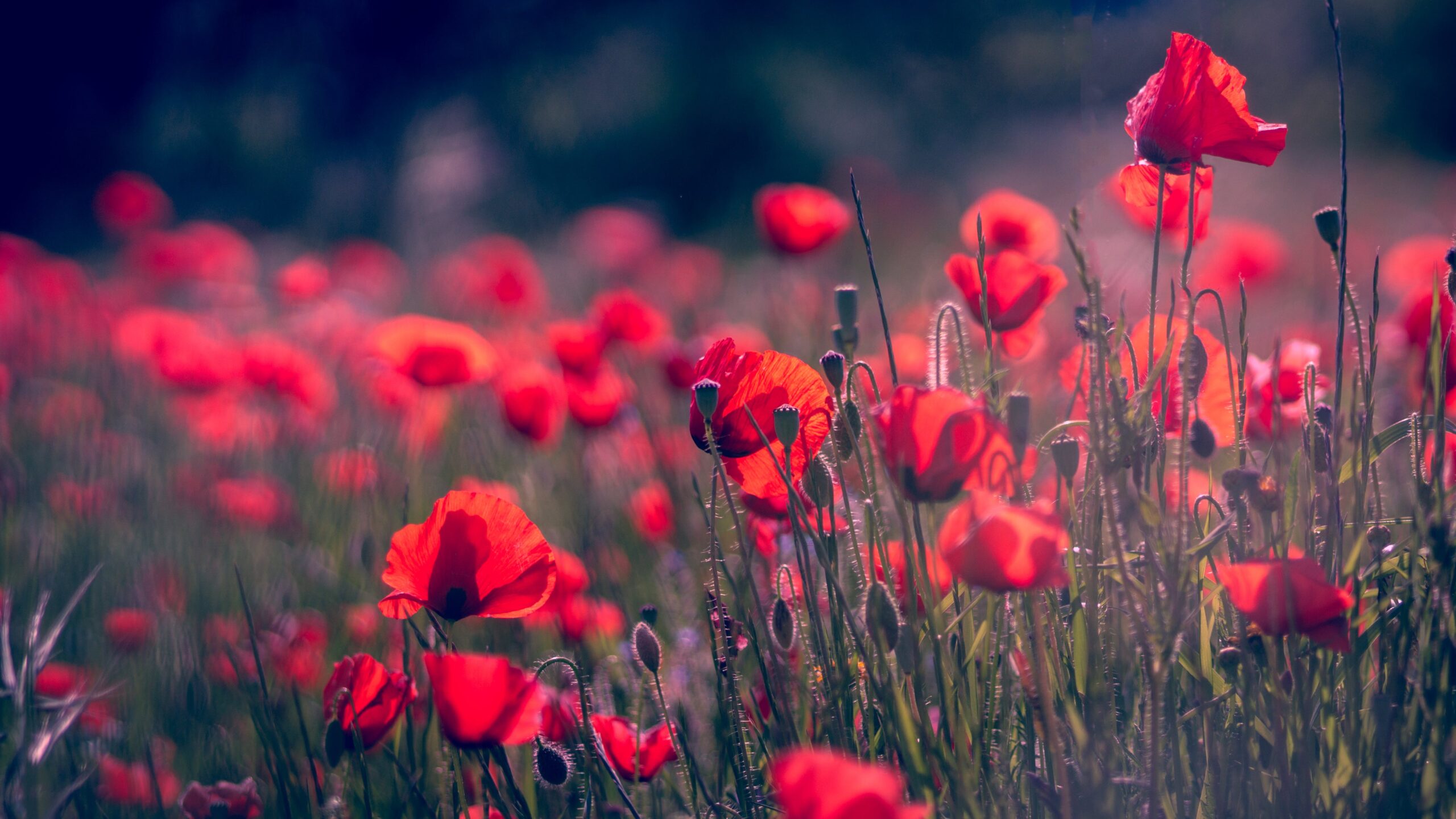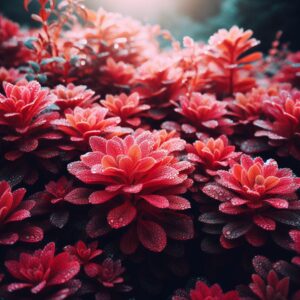A Comprehensive Guide to 15 Types of Red Flowers, Planting Tips, and Blooming Seasons
Introduction
When we think of nature’s vibrant palette, red flowers have a special place. Their fiery and passionate hues have the power to evoke a range of emotions, from love and desire to warmth and celebration. But what sets red flowers apart from the rest? In this article, we’ll explore the captivating world of red flowers, delve into 15 distinct types, learn how to plant them successfully, and discover the seasons in which they flourish. So, let’s embark on this colorful journey through gardens and landscapes, as we seek to answer the age-old question: What makes red flowers so enchanting?
The Allure of Red Flowers
Red Flowers: An Instant Attraction
Red flowers are like nature’s love letters, boldly declaring their presence in gardens, parks, and bouquets. The vibrancy of red captures our attention, stirring our emotions and igniting our senses. There’s a reason why the color red is often associated with love and passion, making red flowers the perfect choice for romantic gestures and heartfelt expressions.
Symbolism and Meanings
Red flowers carry a rich tapestry of meanings, including love, desire, courage, and strength. Roses, in particular, symbolize love and affection, while poppies signify remembrance. The symbolism behind these flowers can add depth and emotion to any floral arrangement or garden design.
15 Types of Red Flowers
1. Ravishing Roses
Plant Type: Most roses are perennial shrubs, though there are also climbing varieties. Planting Tips: Roses thrive in well-drained soil and plenty of sunlight. Plant them in late winter or early spring. Blooming Season: Spring and summer
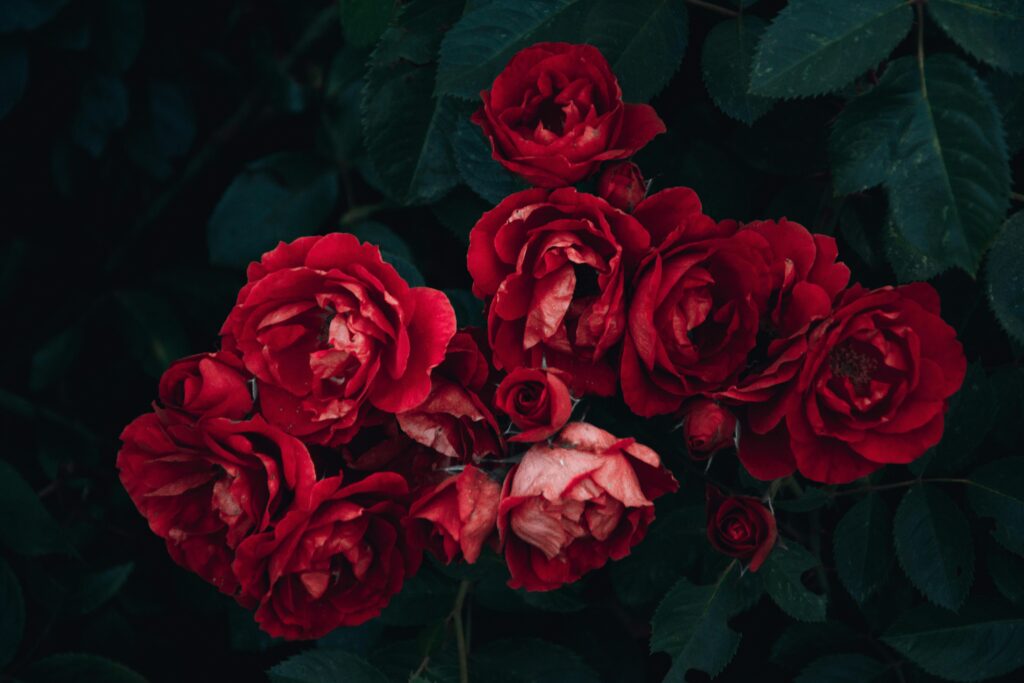
2. Passionate Poppies
Plant Type: Annual or Perennial Poppies. Planting Tips: Poppies prefer full sun and well-drained soil. Sow seeds in the fall for spring blooms. Blooming Season: Spring
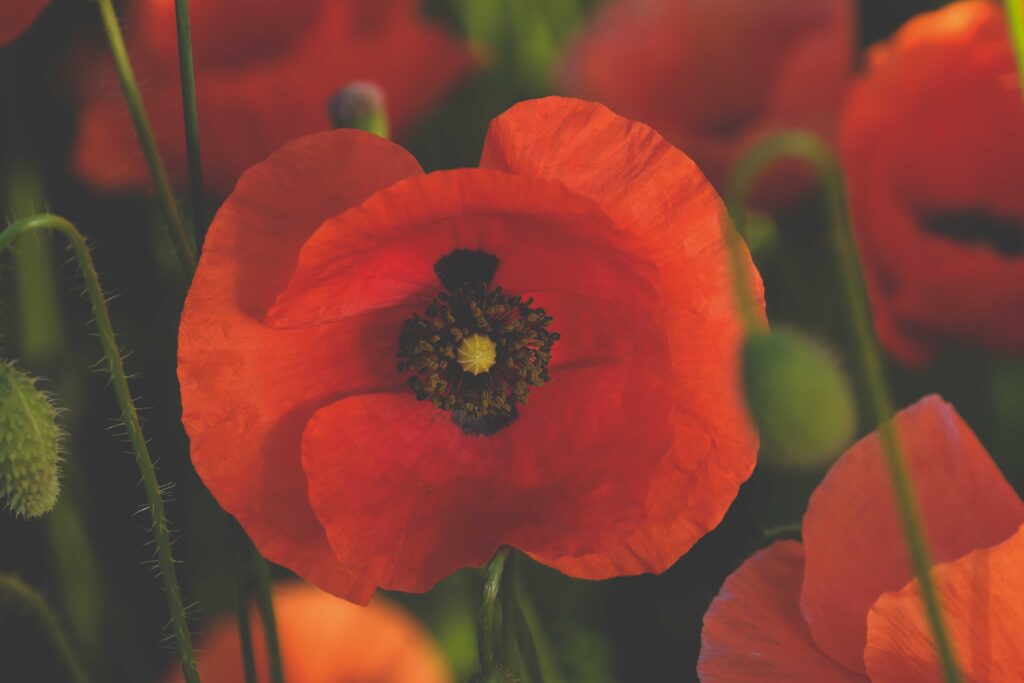
3. Striking Dahlias
Plant Type: Tender perennials, typically grown as annuals in colder regions. Planting Tips: Dahlias need rich, fertile soil and full sun. Plant tubers in the spring after the last frost. Blooming Season: Summer to fall
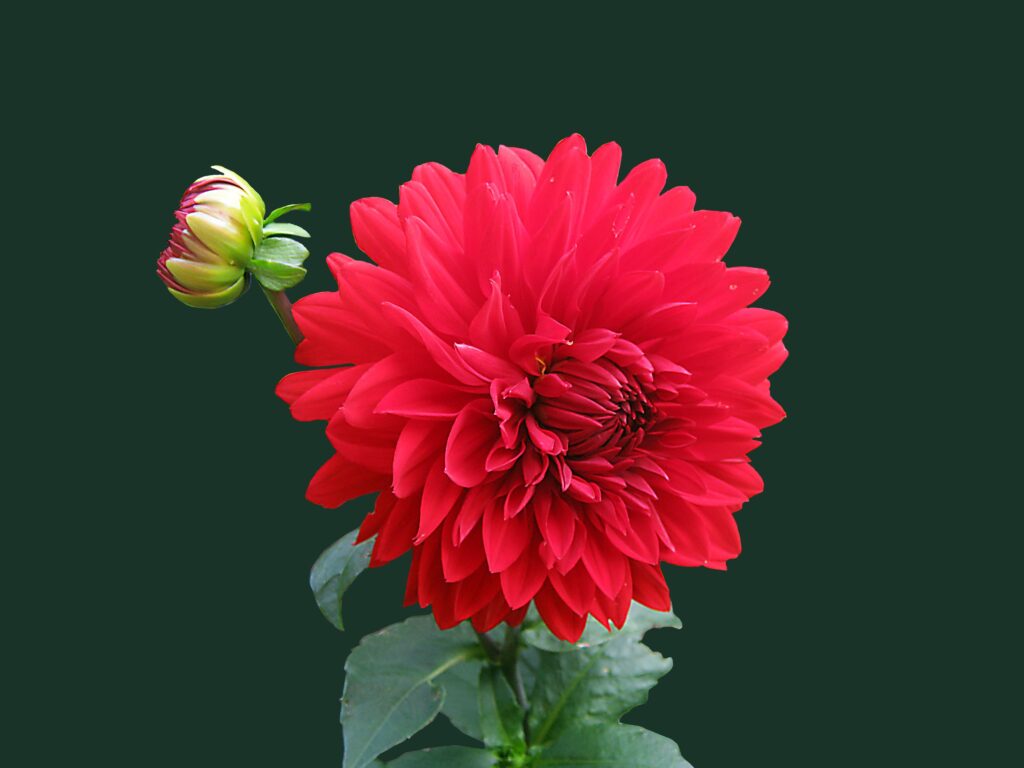
4. Charming Tulips
Plant Type: annuals or bulbous perennials. Planting Tips: Tulips thrive in well-drained soil and partial to full sun. Plant bulbs in the fall for spring blooms. Blooming Season: Spring
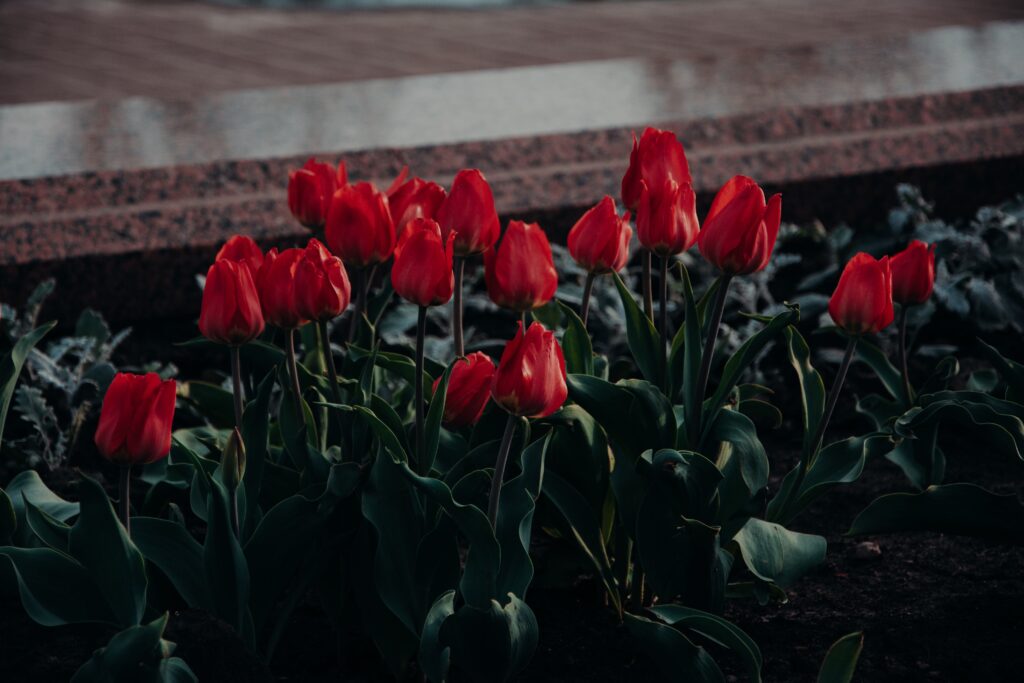
5. Intense Geraniums
Plant Type: annual or tender perennial plants. Planting Tips: Geraniums prefer well-drained soil and full sun. Plant them in late spring. Blooming Season: Spring to summer
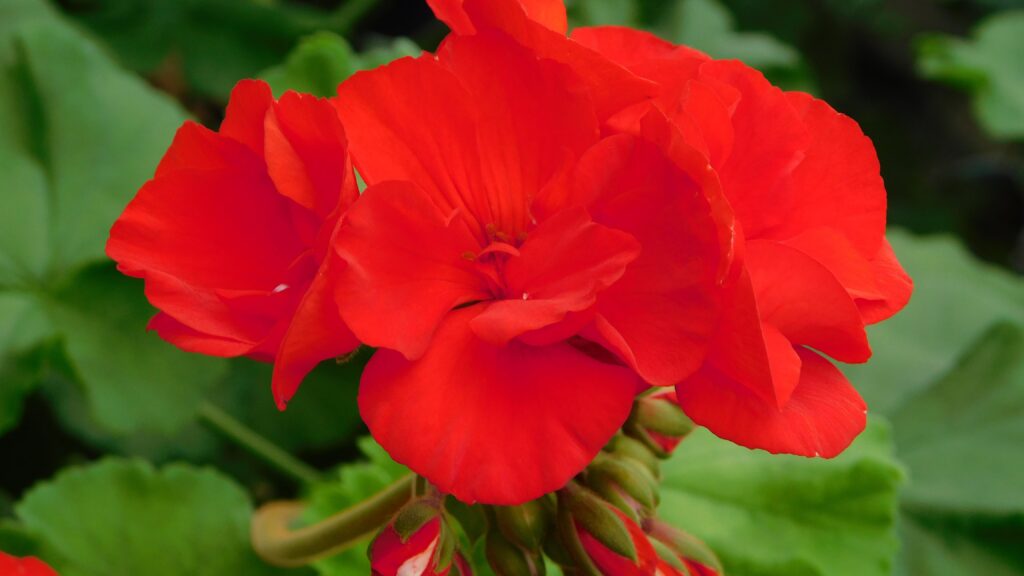
6. Elegant Amaryllis
Plant Type: tender perennial plants. Planting Tips: Amaryllis bulbs need well-drained soil and indirect sunlight. Plant them in late summer or early fall. Blooming Season: Winter to spring
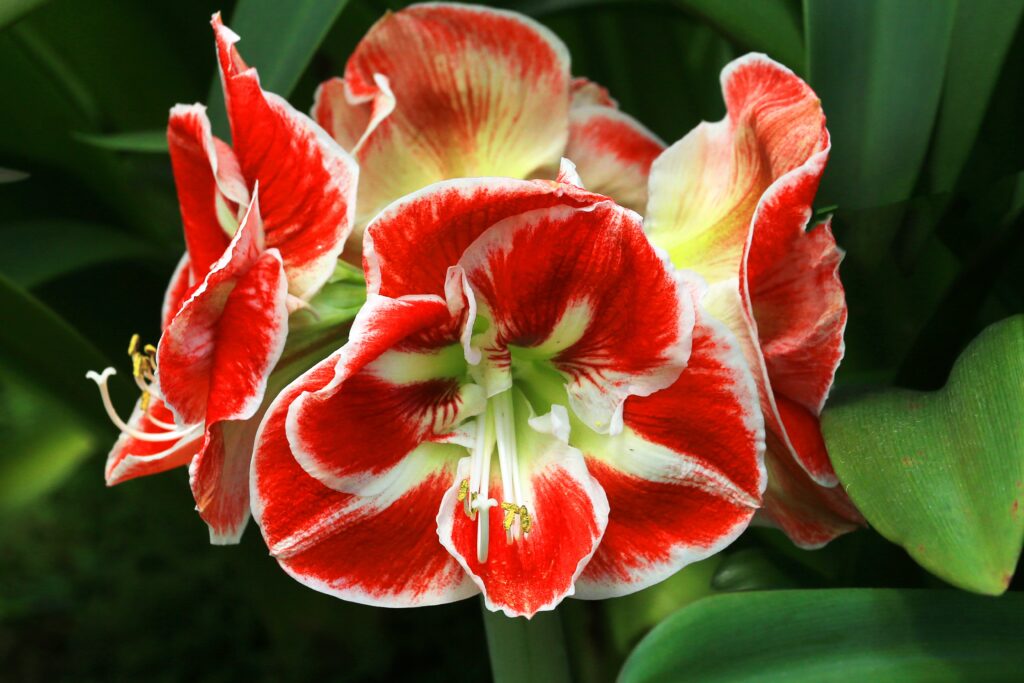
7. Passionflower Vines
Plant Type: perennial vines. Planting Tips: Passionflowers need well-drained soil and full sun. Plant them in the spring. Blooming Season: Summer to fall
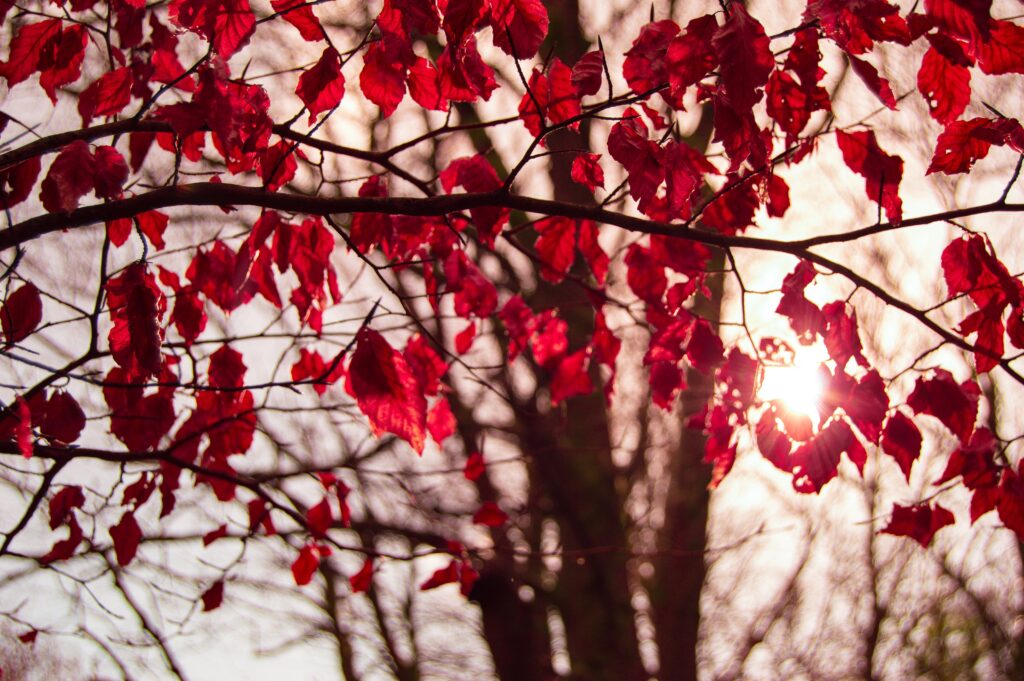
8. Sensational Gladiolus
Plant Type: Cormous perennials. Planting Tips: Gladioli prefer well-drained soil and full sun. Plant corms in the spring. Blooming Season: Summer
9. Dramatic Calla Lilies
Plant Type: tender perennials . Planting Tips: Calla lilies thrive in well-drained soil and partial shade. Plant them in the spring. Blooming Season: Summer
10. Radiant Poinsettias
Plant Type: Annual or perennial shrubs. Planting Tips: Poinsettias need well-drained soil and indirect sunlight. Plant them in the spring. Blooming Season: Winter
11. Enchanting Bleeding Hearts
Plant Type: perennial plants. Planting Tips: Bleeding hearts prefer partial shade and well-drained soil. Plant them in the spring. Blooming Season: Spring
12. Vibrant Hibiscus
Plant Type: perennial shrubs and tender perennials, Planting Tips: Hibiscus thrive in well-drained soil and full sun. Plant them in late spring. Blooming Season: Summer to fall
13. Beautiful Begonias
Plant Type: tender perennials in mild climates. Planting Tips: Begonias prefer well-drained soil and partial shade. Plant them in the spring. Blooming Season: Summer
14. Graceful Gerbera Daisies
Plant Type: tender perennials. Planting Tips: Gerbera daisies need well-drained soil and full sun. Plant them in the spring. Blooming Season: Spring to fall
15. Scarlet Bee Balm
Plant Type: perennial plant. Planting Tips: Bee balm thrives in well-drained soil and full sun. Plant them in the spring. Blooming Season: Summer
Planting Red Flowers: Tips for Success
Planting red flowers can be a rewarding experience, but it requires careful planning and attention to detail. Here are some general tips to ensure the successful growth of these vibrant blooms:
- Choose the right location: Red flowers typically require full sun, so select a spot in your garden or landscape that receives adequate sunlight throughout the day.
- Prepare the soil: Ensure well-drained, fertile soil that suits the specific needs of the red flowers you’re planting. Amending the soil with compost can help improve its quality.
- Timing is crucial: Different red flowers have different planting seasons. Make sure to plant them at the right time of year to maximize their growth and blooming potential.
- Adequate watering: Red flowers generally need consistent moisture. Be mindful of their water requirements and avoid overwatering, which can lead to root rot.
- Mulch and protect: Apply mulch around the base of your red flower plants to help retain soil moisture and suppress weeds. Consider using organic mulch to enrich the soil further.
The Blooming Seasons of Red Flowers
Red flowers exhibit a stunning array of blooming seasons, each with its unique charm and appeal. Here’s a glimpse of when you can expect these red beauties to flourish:
- Spring Blooms: Poppies, tulips, geraniums, bleeding hearts
- Summer Splendor: Roses, dahlias, gladiolus, hibiscus, begonias, gerbera daisies, scarlet bee balm
- Winter Delights: Amaryllis, poinsettias
Conclusion: Embracing the Beauty of Red Flowers
In conclusion, the world of red flowers is a mesmerizing one, filled with diverse varieties that can add vibrancy and depth to any garden or floral arrangement. From the timeless allure of red roses to the bold elegance of calla lilies, these blooms never fail to captivate our hearts and senses.
As we’ve explored the planting tips and blooming seasons of 15 types of red flowers, you can now embark on your own colorful journey. Whether you’re a seasoned gardener or a budding enthusiast, planting red flowers offers a chance to connect with nature’s beauty and create stunning displays that will leave a lasting impression.
So, the next time you spot a bouquet of red flowers or come across a red-themed garden, you’ll appreciate the effort and care that goes into nurturing these captivating blooms. As you plant your own red flower garden, you’ll not only add color to your surroundings but also experience the joy of watching these enchanting flowers come to life.
In the world of gardening and floral design, red flowers truly stand out as nature’s masterpieces, leaving a lasting impression on all who encounter their passionate hues and timeless beauty.
Remember, with the right care and attention, your garden can become a canvas of red, where each flower tells a unique story of love, passion, and natural beauty.

